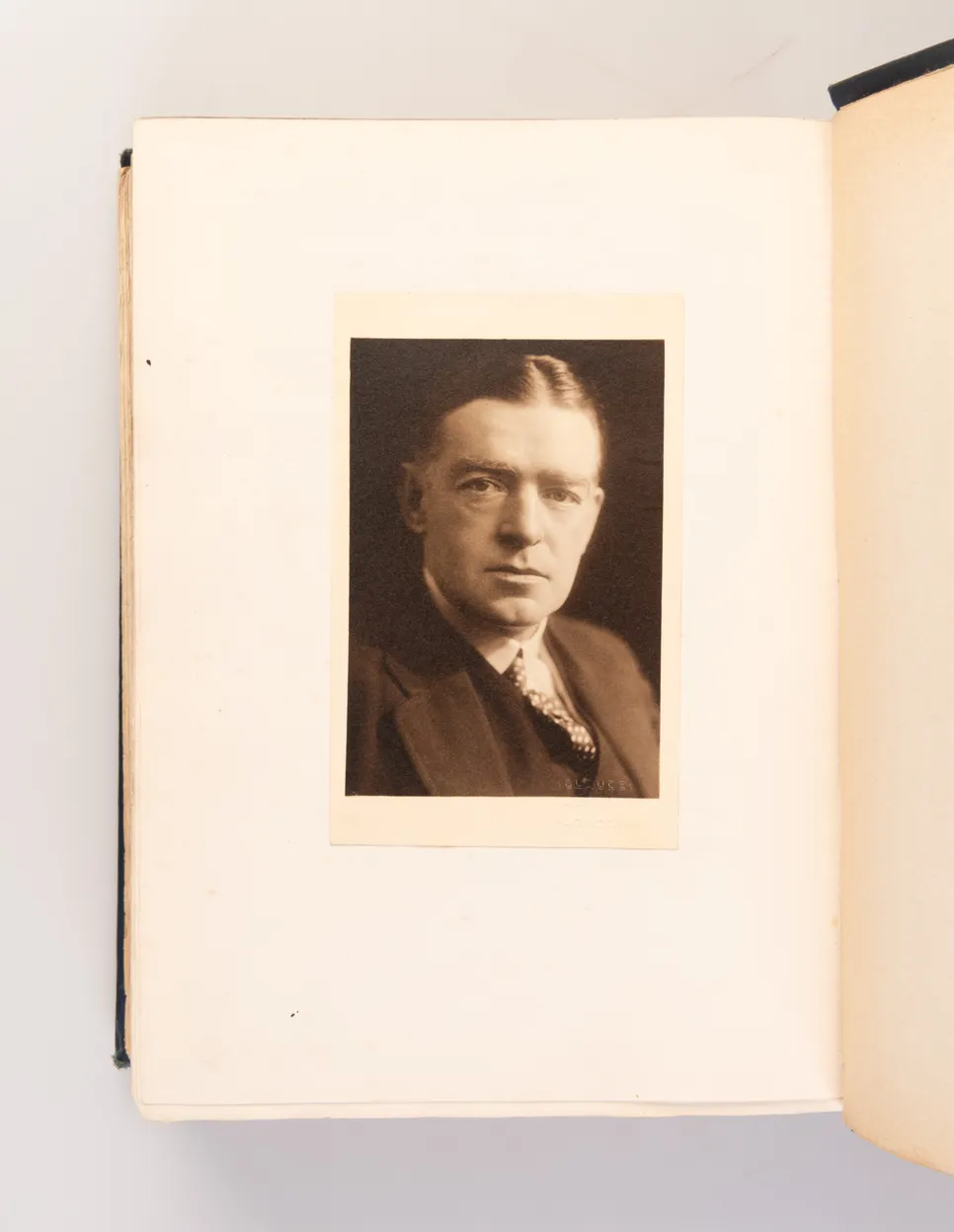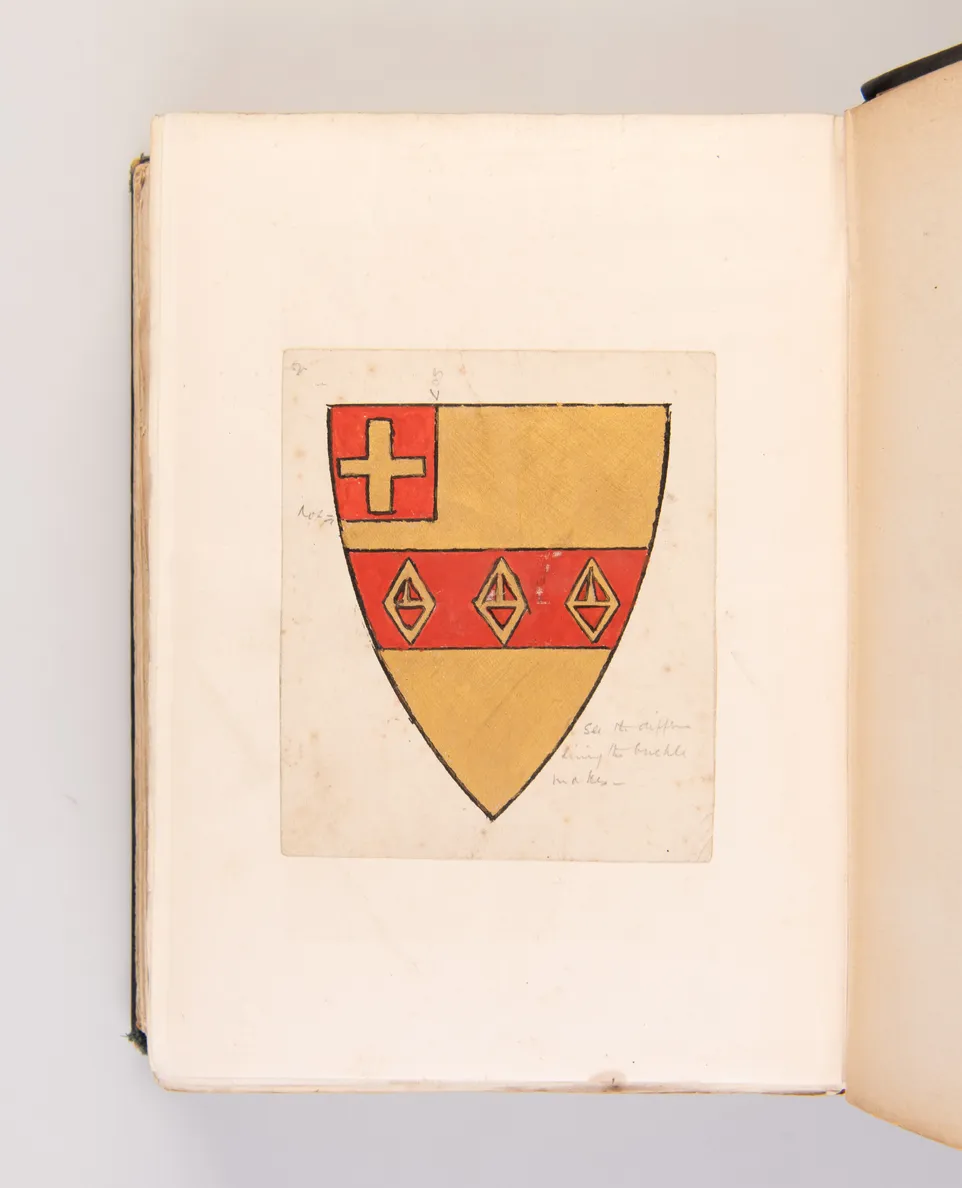A desirable copy owned by someone close to Shackleton. Inscribed "To Ethie from Ernest", with a pasted in sketch of Shackleton's sledging flag annotated in his own hand, and two real photo postcards of Shackleton.
Though impossible to say with certainty, the "Ethie" of the inscription could plausibly be his younger sister, Ethel Ayers (née Shackleton). The personal nature of the inscription, signed simply "Ernest", suggests a familiarity beyond that of a mere acquaintance, and the additional sketch Shackleton's sledging flag, pasted in at the end, calls back to the 1901 Discovery expedition for which Shackleton originally designed this flag, in the company of Scott.
Sledging flags, as they were used in the Antarctic, were often made for expedition members by the women closest to them: wives, mothers, and sisters. On the illustrated page of flags in the Discovery expedition newspaper the South Polar Times, Shackleton's flag stands out on the grounds of its unique design: "As an Irishman, albeit of Yorkshire extraction Shackleton's sledge flag was completely different from everyone else's. It was square, yellow with a red stripe across the centre charged with three buckles, lozengy, tongues upwards, palewise; on a red canton a yellow cross humette" (Tomlinson, 220). Flags were also used on the Nimrod expedition, however most of the other crew members followed Shackleton's lead and opted for square designs, rather than the forked pennant preferred by Scott and Markham. Importantly, the sketch pasted into this book give a variant shield shape. This is reminiscent more of a crest or emblem, and Shackleton's note alongside reads "see the difference lining the buckle makes." The choice of gold ink is also interesting - the flag itself is now held at the Scott Polar Research Institute in Cambridge, and gold much more accurately represents the colour of the fabric than the yellow used in the South Polar Times, presumably a printing constraint.
This impressive publication is the official narrative of the 1907-1909 British Antarctic Expedition in the ship Nimrod. Captained by Sir Ernest Shackleton, though the expedition did not fulfil its objective of reaching the South Pole, it did set a new Farthest South and achieve the first ascent of Mount Erebus. The expedition members occupied themselves over the long Antarctic winter with writing, printing and binding a book, the Aurora Australis, an extraordinary achievement and one of the great high-spots of Antarctic book collecting. This first trade edition was issued in the same year as the deluxe edition, and produced from the same typeset.
Spence, 1097; Rosove, 305.B1; Huntford, R., Shackleton. (Abacus, 1996); Tomlinson, Barbara, Chivalry at the Poles: British Sledge Flags. Proceedings: The XIX International Congress of Vexilology. pp.215-221.






